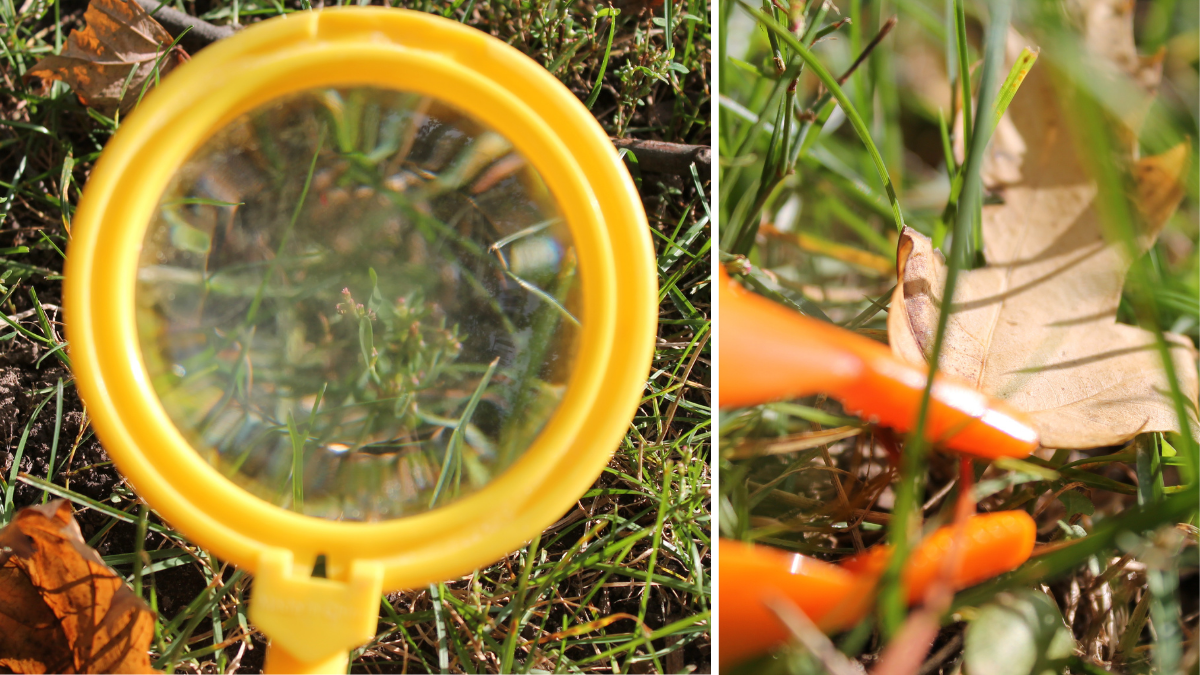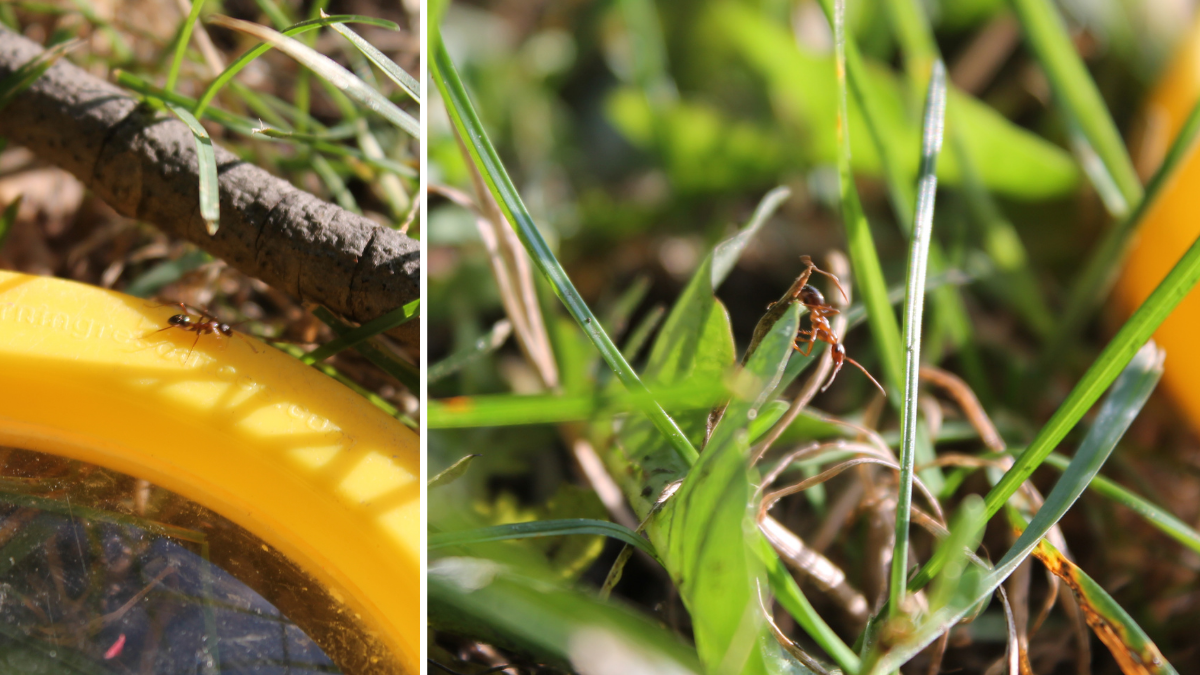Part 3: Small Square Nature Journal
Resiliency is an essential life skill. Resilient children are more willing to take on new challenges, quickly recover from setbacks, and try again to succeed. They are able to manage their emotions through times of stress and uncertainty. Caregivers can help foster resiliency in children with experiences that promote play, reduce stress, and encourage connection to the natural world.
This week’s resiliency building activity is Small Square Nature Journalling.

Find Your Square
Small Square Nature Journalling focuses children’s investigative and observation skills on one tiny piece of nature. Inspired by Donald M. Silver’s One Small Square series, a Small Square Nature Journal has all the benefits of traditional nature investigation packed into one little square.
To begin your Small Square Nature Journal, locate a spot in your backyard, nearby park, local trail, or public green space. This tiny space is where the entire activity will take place. Your square should be compact, only two to four feet wide and long, and small enough that a thorough investigation can be done in a matter of minutes.
Mark your square using pieces of cardboard, paper, string, or a hula hoop. Encourage your child to explore and observe everything in this square - even the smallest of spaces can be teeming with life! Small Square Journalling invites children to slow down, be present, and connect with their immediate surroundings.
Investigative Tips
Use Your Senses. Invite your child to use their sense of touch, hearing, sight, and smell when exploring their small square. Ask open-ended questions about what your child is seeing, noticing, and experiencing.
Dig Deeper, Look Closer. Bring along a magnifying glass, tweezers, craft sticks, or spoons to help your child investigate the tiniest details of their small square. Move aside flowers, weeds, plants, and rocks to take a peek at anything hidden below the surface.
Use your imagination. Explore big questions and ideas. What does this small square look like from an insect’s, animal’s, or bird’s point of view? When children take on new perspectives, they learn empathy, practice imaginative thinking, and oftentimes engage in dramatic play.
Document Your Findings. Honor your child’s voice by providing them with the materials they need to communicate their perspective on their small square. Writing, drawing, or taking pictures of what they observe helps affirm your child’s individual view of the world. This experience fosters resiliency by building self-confidence.

Nature and Resiliency
Small Square Nature Journalling helps children become deeply immersed in the smallest details of the natural environment. This allows children to develop a stronger sense of belonging and connection to their world, their neighborhood, and the environment. This activity helps hone children’s focus and reduces stress by enabling them to be mindful and present, letting go of external anxieties in the process.
When children communicate their unique perspective in their nature journal, they are learning to process their emotions and be aware of their feelings. This experience helps children better process and understand their own emotions in times of adversity. By honoring your child’s voice throughout the activity, you are promoting feelings of comfort and competence, both of which are protective factors that foster resiliency.
Resiliency Continued
● Forward: Read Part 4
● Backward: Read Part 2
________________________________________
Jessie Collins, OCT
Education Specialist, London Children’s Museum
Kristen Palumbo
Teacher Candidate and AFE Placement Student, Western University

